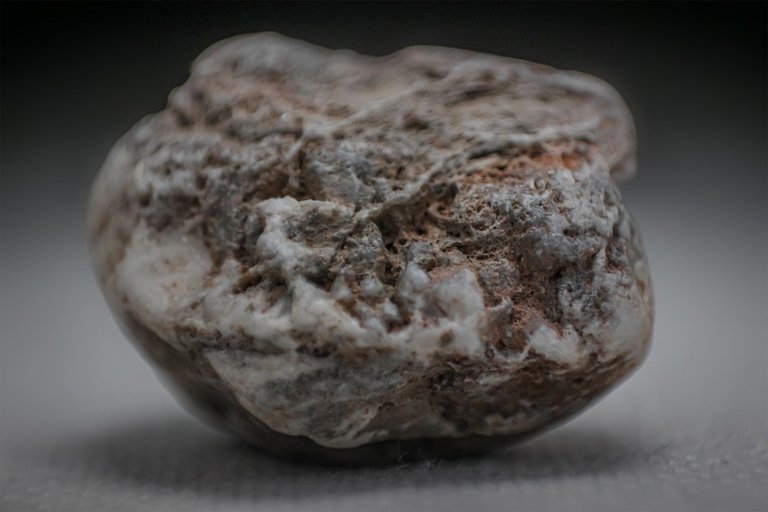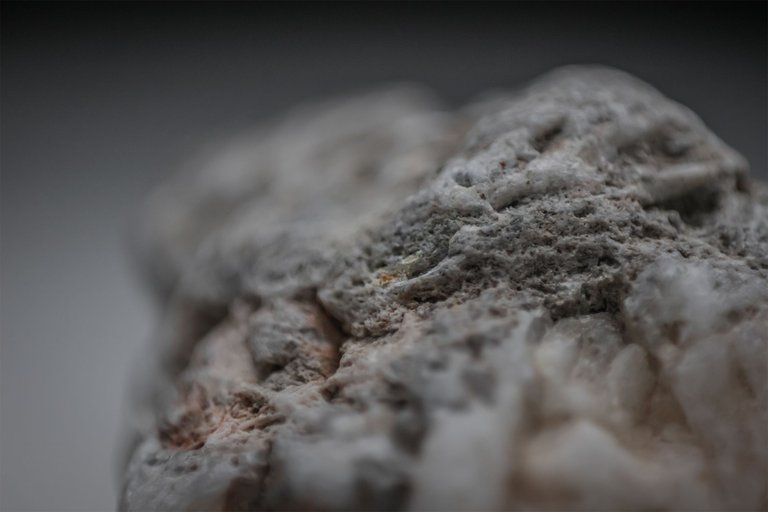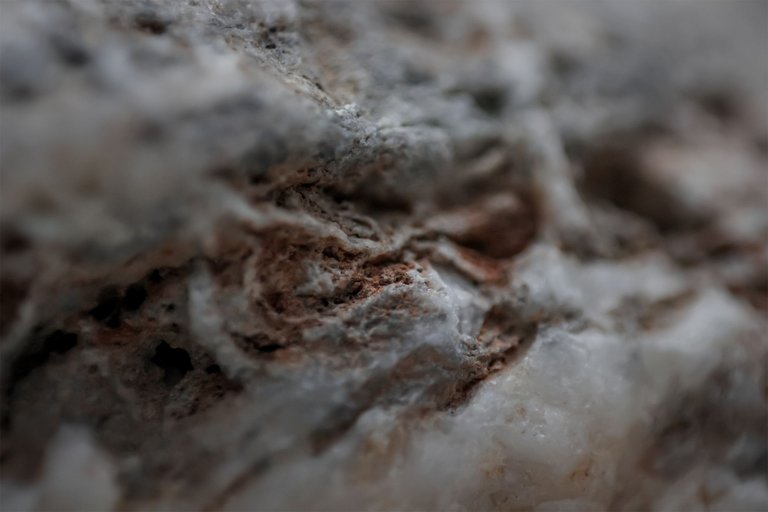
Hi everybody :)
Today I bring you another one of those geological specimens, a very interesting lithic one, which makes up for in detail what it lacks in tone.
The textures present in this mineral transform into authentic canyons when observed closely, on a macro scale.
Technical Description of Macro Photography Session of a tiny mineral
- Session Purpose
The objective of this session is to capture detailed images of this peculiar mineral, with a focus on thoroughly observing and documenting all characteristics and visual details. Furthermore, i seek to create attractive visual compositions for publication on this blog, aiming to share the beauty and complexity of this structure.
Used equipments
Camera: Canon EOS 600D Digital SLR with CMOS sensor
Lens: EFS 18-55mm with f/2 maximum aperture, allowing shallow depth of field and capturing fine details.
Used inverter ring
Tripod: not used
Lighting: Adjustable LED lights to provide soft, even lighting, avoiding harsh shadows and highlighting the details of structures.


Among the numerous techniques available for macro photography, this method is arguably the most cost-effective and efficient for individuals possessing a camera with a removable lens. By simply detaching the lens and reversing its direction, and employing an inversion ring, the process becomes more manageable and streamlined.
Let me present today’s model:


Camera Settings
Focus Mode: Manual focus to ensure precision in specific details of mineral structure.
Aperture: Variable aperture between f/0 and f/2 for adequate depth of field, ensuring all important details are in focus.
ISO: Low ISO setting (800) to minimize noise in images.
Shutter Speed: Adjust shutter speed as needed to avoid underexposure, while maintaining a value that allows you to capture sharp details.
Procedures
- Environment Preparation:
Assembling the macro photography set in a controlled environment, minimizing the presence of dust and ensuring a clean and white surface for positioning the mineral. - Section Positioning:
Placing the subject in position that highlight the unique characteristics, using appropriate supports to keep the mineral stable. - Lighting Adjustment:
Setting the LED lights to provide uniform illumination, adjusting the intensity and angle of the lights to eliminate unwanted shadows. - Image Capture:
Taking multiple shots with variations in aperture settings, shutter speed and capture angle, exploring different perspectives and compositions. - Image Review:
Immediate analysis of images captured on the camera's viewfinder to ensure that all desired details were captured sharply and clearly. - Post-Production Editing:
Importing images into editing software (Adobe Photoshop CS) to adjust brightness, contrast, sharpness and remove any imperfections.

Before moving onto the result...
- My introductory thoughts about macro photography:
The field of macro photography is a domain replete with limitless possibilities and boundless creativity. It is truly remarkable how the use of macro lenses, with their capability to produce beautifully blurred backgrounds, can yield such a diverse array of images rich in contrast and texture.
Macro photography unveils a world of intricate details that often escape the naked eye. It is as if an entirely new universe unfolds before the lens, inviting us to explore and appreciate the beauty inherent in the minutiae of everyday life.
What makes macro photography so captivating is its ability to offer a new perspective on the world around us. With the right technique and vision, even the most mundane subjects can be transformed into works of art, each image telling its own unique story.
There are no limits to what can be captured. Each object becomes a potential subject, where the ordinary becomes extraordinary, where even the smallest details can evoke a feeling of surprise.

Let's now move onto the result:











To finish, i leave you with some considerations regarding these photo sessions:
Examining miniature subjects through macro photography reveals a compelling domain where minute details assume significant importance. Immersing oneself in the intricacies of these diminutive objects allows for the recognition of the often-overlooked beauty within this microenvironment. Each image captures a fleeting moment, showcasing the complexity hidden within the small-scale elements of nature. The essence of macro photography lies in its ability to elevate ordinary subjects to extraordinary levels, offering an intimate and captivating perspective.
The session is closed for today.
Hope you like it :)

These photos weren't taken with a tripod
Camera - Canon EOS 600D
Lens - EFS 18-55mm
Location - PortugalPhoto by @aleister

See you soon
Thank you for watching
Never forget
The price of anything is the amount of life you trade for it.
Time is life... value yours, make every fraction worth it.
Every time I see your host I am very happy because here we get to see special and different types of stones.